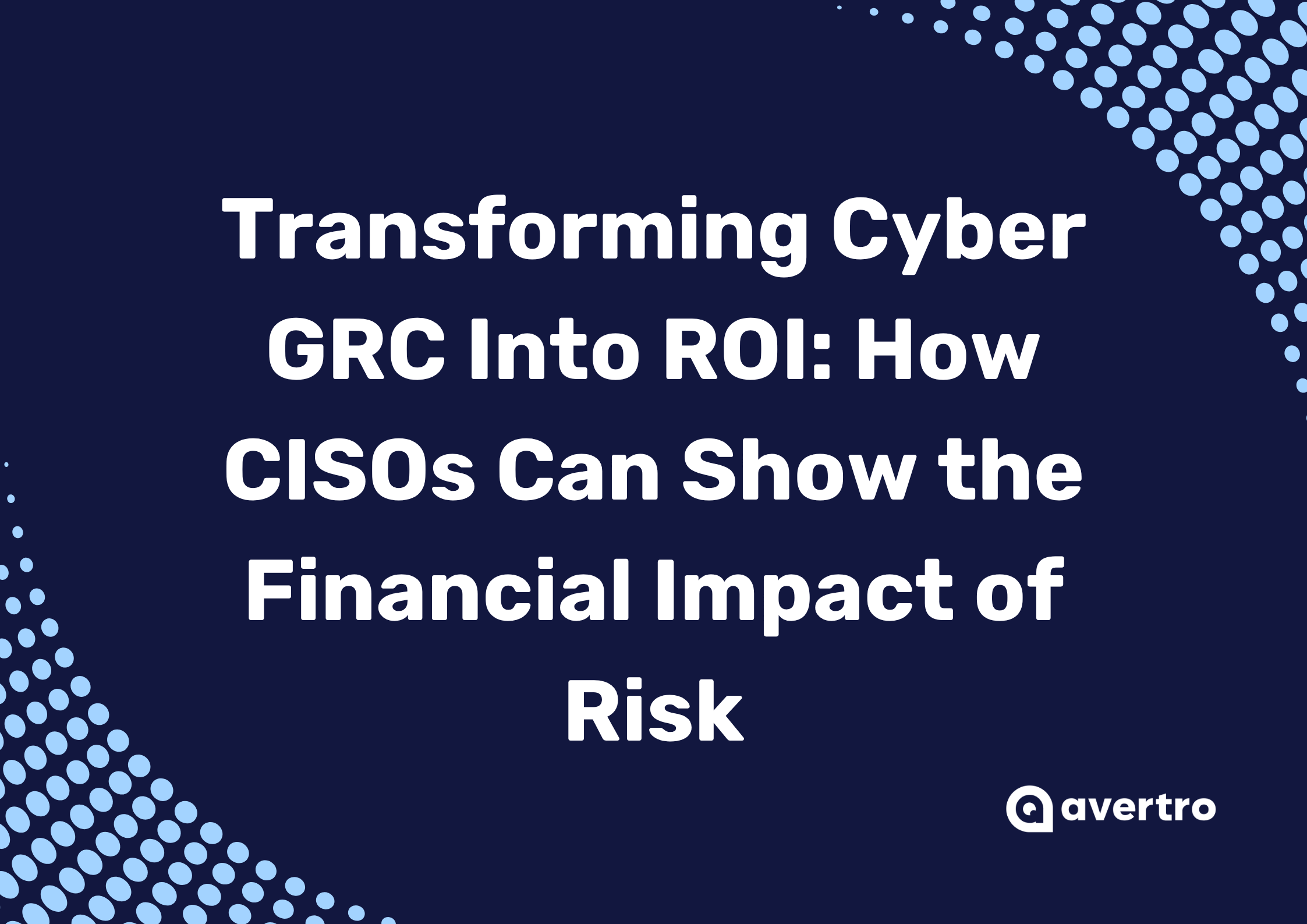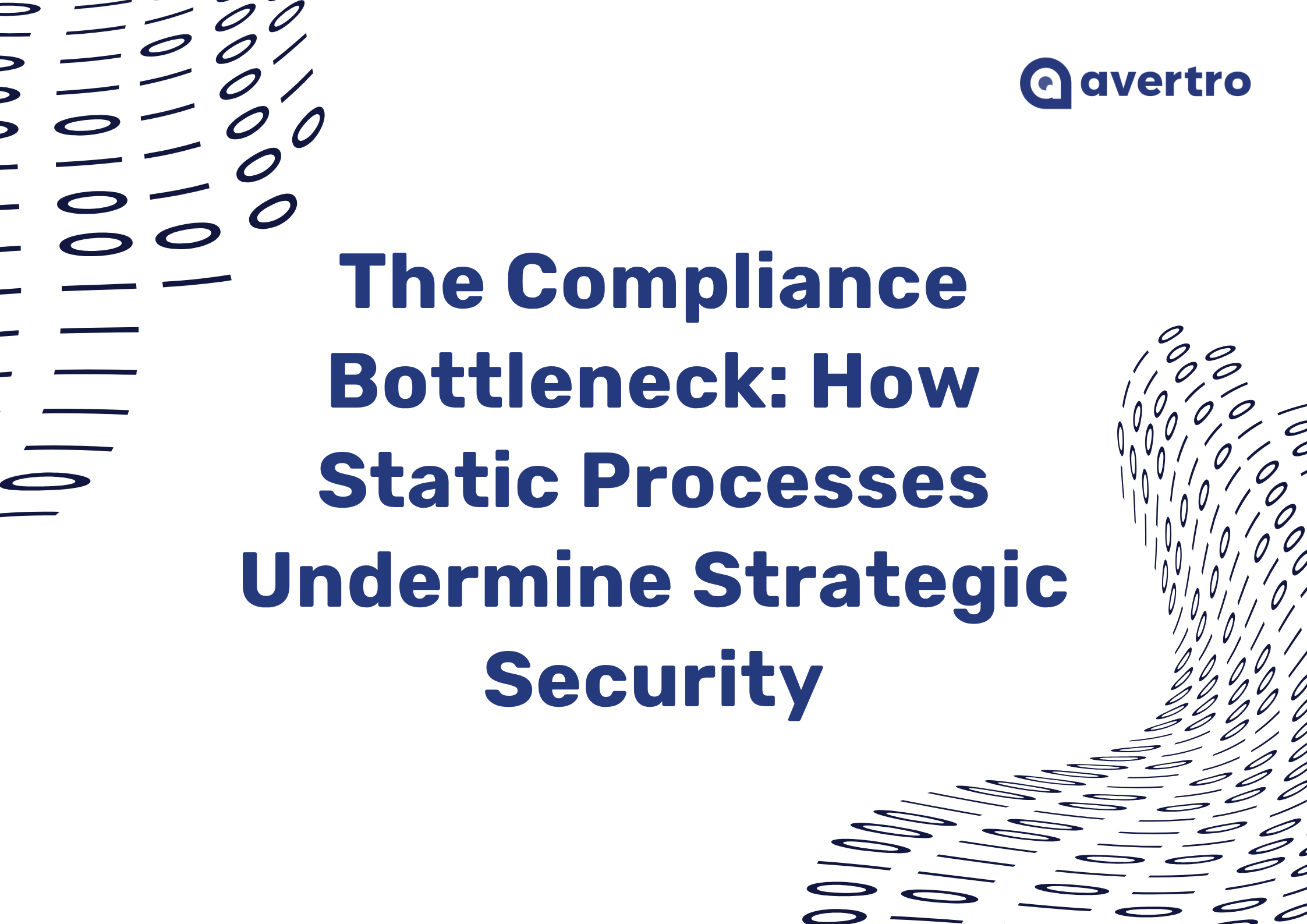The New Mandate for Security Leadership
Over the last decade, the role of the CISO has evolved from gatekeeper to business enabler.
Cybersecurity is now a board-level issue, a core pillar of organisational resilience, and a defining factor in corporate reputation. Yet, despite this elevated visibility, one challenge continues to surface in every executive discussion: proving the business value of cyber investments.
Boards and investors increasingly expect quantifiable evidence that security programs are reducing exposure, protecting revenue, and contributing to long-term performance. But translating technical data into financial clarity isn’t straightforward. It requires alignment, context, and a level of integration that most governance, risk, and compliance (GRC) systems weren’t designed to deliver.
This gap between what the business wants to understand and what current systems can demonstrate is driving a fundamental shift in how cyber risk is managed and reported.
Why the Traditional Approach Falls Short
Most organisations have matured their governance and compliance functions. They can demonstrate adherence to frameworks, audit readiness, and policy discipline. But when the conversation moves to ROI, the limitations of traditional approaches become clear.
Cyber risk is often expressed in abstract terms, “high,” “medium,” or “low”, which don’t easily translate into business language. The result is a disconnect between risk data and the strategic priorities it’s meant to inform.
CISOs spend valuable time gathering information from disparate sources, manually correlating controls to outcomes, and still face questions about value that can’t be fully answered. The truth is, most GRC systems were built for compliance oversight, not for proving performance. And as the business context around cybersecurity grows more complex, that distinction matters.
Without a dynamic, unified view of risk, leaders struggle to demonstrate progress, justify investment, or show how security decisions support organisational goals. In a world where every minute counts, inefficiency isn’t just frustrating; it’s risky.
Connecting Data to Direction
The modern CISO operates at the intersection of technology, finance, and strategy. Their remit extends beyond protection to communication, translating cyber metrics into a language that resonates with executives and boards.
To succeed, they need a connected ecosystem where governance, risk, compliance, and performance data flow together, creating a single source of truth for both technical teams and decision-makers.
This isn’t about new frameworks or heavy processes. It’s about a mindset shift: approaching Cyber GRC as an informed discipline that turns information into intelligence and oversight into influence.
When data is connected and contextual, CISOs spend less time reporting and more time directing. They can quantify the business effect of resilience, prove the value of investment, and anticipate risk before it becomes loss.
The ROI of Cyber GRC Visibility
When the pieces finally connect risk registers, control libraries, compliance data, and investment performance, the CISO’s role changes fundamentally. Visibility stops being a static deliverable and becomes a strategic asset that guides every decision.
For years, proving cyber ROI meant defending spend. Now, it’s about demonstrating outcomes.
With live, contextual insight, CISOs can measure maturity in real time, link initiatives to tangible results, and show the financial impact of every project; not annually, but continuously.
The future-ready CISO won’t just maintain a dashboard. They’ll operate a living model of organisational resilience, one that quantifies progress as it happens. They’ll be able to:
- Quantify maturity with confidence: Using consistent, evidence-based metrics that show exactly how posture is improving and what that means in cost, downtime, or avoided loss.
- Justify spend with evidence: Linking every dollar of investment to reduced exposure, improved assurance, or accelerated recovery.
- Simplify complexity: By replacing fragmented reporting with a single source of truth that scales across boards, auditors, and operations.
- Build credibility: Turning cyber maturity from a subjective conversation into a measurable, defensible performance indicator.
The ROI here isn’t only financial, it’s operational and reputational. A CISO who can explain, quantify, and anticipate risk becomes a strategic advisor. When performance and risk data are truly connected, the value of cybersecurity becomes self-evident.
Why This Matters Now
CISOs today face three converging pressures: regulatory accountability, financial scrutiny, and board-level visibility. Regulators demand evidence of oversight. Boards want clear answers. Teams need time to focus on priorities, not endless reporting cycles.
The ability to calculate cyber maturity with ease and precision has become a defining capability. It’s how leaders prove progress without manual effort, align investment with performance, and show, in objective terms, that resilience is improving.
This isn’t theoretical. Across industries, maturity scores are shaping insurance premiums, influencing investor confidence, and directly impacting organisational value. In this environment, leaders who can quantify maturity and communicate it effectively gain more than compliance; they gain trust, agility, and influence.
CyberHQ® enables that shift. It gives CISOs the visibility to measure maturity, automate reporting, and translate complex governance data into clear business impact, freeing them to lead strategically, not administratively.
If your team is ready to move beyond static reporting and start demonstrating the measurable ROI of your cyber program, we’d like to talk to you.
Book a meeting with our team to see how CyberHQ® helps CISOs calculate maturity, communicate impact, and prove the value of cybersecurity in your business.



.png)




